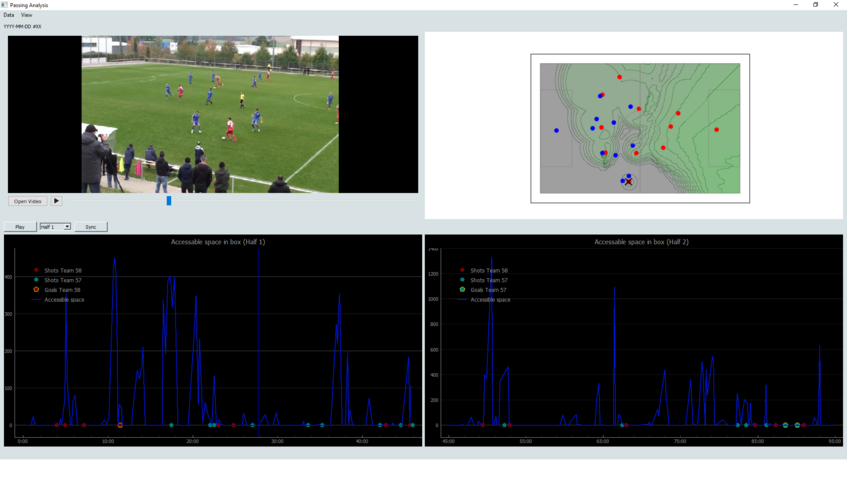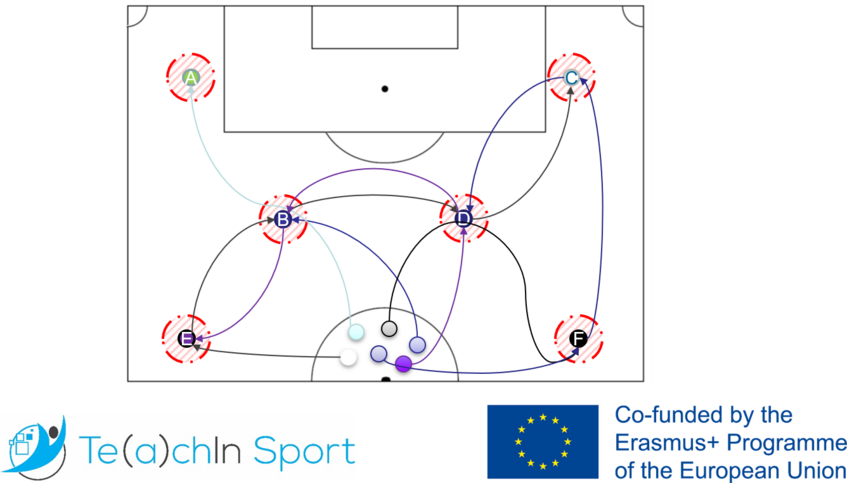Computer Science in Sport
Computer Science in Sport
Mission statement
With the progressing development and spread of digital technologies, ever greater amounts of data are being collected and processed today This means that the scientifically sound handling of this data is becoming increasingly important – also in sports. Parallel to the technological progress, the interdisciplinary field of sports informatics/computer science in sport began to emerge in the 1960s.
Sports informatics deals with the application of methods from computer science to sport-related problems and topics. In particular, it deals with the collection, storage, processing, analysis and visualisation of data from sports science. For example, algorithms are used to obtain kinematic data from video recordings, to classify gait disorders and to better understand performance and collective behaviour in team sports with the help of positional data.
The application areas of sports informatics also include the development of specific applications, for example to plan and design training sessions, to implement sport events or for professional performance analysis. This also includes wearables and fitness trackers, which enjoy great popularity nowadays. These are a particularly vivid example of how combining sport with digital applications can motivate especially young, technology-savvy people to lead an active and healthy lifestyle.
Conversely, computer science also benefits from sports science. Some sports science questions are particularly well suited to the application of techniques from computer science, for example when human behaviour in a sports context is studied. The insights gained from specific applications may then be transferred to other contexts and motivate the development of algorithms and techniques with broader relevance.
Research
Game Analysis

Game Analysis
Analysis of sports games like association football is an interesting and relevant area of study as these games are characterised by complex, multifactorial processes. Such processes are constantly interacting with each other during play, in particular, psychological, physiological, technical and tactical aspects are heavily interrelated. For instance, the collective tactical behaviour of a team (or more specifically, the dynamics of its players' positioning), is regulated by the rules of the game as well as spatiotemporal informational constraints yielded by cooperative and competitive relationships with teammates and opponents. This tactical behaviour in turn affects physical demands which therefore cannot be properly considered in isolation. Quantifying players' and teams' behaviour while accounting for the complex relationships involved, is one of our primary goals, as this provides deep, objective feedback for coaches. With the rise of modern technology, in particular positional tracking systems, the development of sophisticated data analysis algorithms is set to become a fundamental building block of successful performance in sports games.
In a joint project with the AKA St. Pölten, for example, we aim to quantify and integrate the different dimensions of analysis in youth association football, to explain how its working parts in a training and performance environment are connected and how they continuously adapt over time.
Wearables and Ubiquitous Computing in Sports

Wearables and Ubiquitous Computing in Sports
Nowadays, digital technology has become pervasive in the lives of many people. With electronic devices having become smaller and more lightweight over the last few decades, there was a surge in mobile devices like smart phones, smart watches or even VR and AR systems. The prevalence of such devices not only impacts society as a whole, but also the practice of sports in particular. Wearable devices can motivate people to exercise more, for instance by allowing them to set goals and compare themselves with others or by including game-like elements. Our goals in this area include the development of helpful applications for these devices and the scientific validation of their accuracy and effectiveness.
One such smart system is the Mobile Motion Advisor, which supports people during their physical activity by providing intelligent feedback derived from sensor data.
As another recent example, we developed the COMPASS orienteering game as part of the Erasmus+ project COMPASS, which is a mobile application that allows teachers, coaches and ordinary people to create and conduct orienteering events for multiple participants with low effort.
Multimedia and E-Learning
Multimedia and E-Learning
Education is another area where sports and computer science can synergise. For example, in physical education classes, technology like video analysis can be used by teachers to create didactically valuable lessons for their students. Also, we create high-quality educational materials on sport-related topics. Using technologies like text-to-speech or interactive elements, we aim to provide a better individual learning experience and make educational content more accessible.
International Journal of Computer Science in Sport
International Journal of Computer Science in Sport
Since 2002 we are in charge of the regular publication of the International Journal of Computer Science in Sport (ISSN 1684-4769): https://iacss.org/index.php?id=30 & https://sciendo.com/journal/ijcss
